
Alison Crouse is a Philadelphia-based photographer whose work attempts to visualize the emotional baggage we each carry from day to day. Her ongoing series Devastation Portraits exists somewhere between performance art and a cathartic exercise to help start the conversation surrounding mental wellness.
Each picture is a self-portrait of Crouse in a public area, bogged down by what she describes as "intimate pain." By illustrating what otherwise may be invisible to others, Crouse hopes to shake our preconceived notions of what it means to be vulnerable and to help demonstrate that what's on the surface may not always be the full story.
Here, Alison Crouse shares with BuzzFeed News a selection of Devastation Portraits and her personal experiences in dealing with her own vulnerability.
Devastation Portraits is interested in visualizing the juxtapositions of intimate pain and attempts at suppressing that pain. By intimate pain, I mean the pain that is the deepest within us, that is very private, that we likely don't share...at least to the fullest extent. It's the sadness that we admit to and feel when we are alone, but that we try to put aside when we assume our public personas.
I'm most interested in visualizing the juxtapositions of intimate pain and attempts at suppressing that pain. More specifically, I wanted to look at the ways that we, as a society, are discouraged from expressing or acknowledging vulnerability in front of others.

I think we have the wrong idea about vulnerability. From a very young age our culture teaches us that it is synonymous with weakness, but that definition is callous and limiting. We are not weak; we are susceptible.
We are susceptible to life, to love, to pain, to sadness, to disappointment — and if we could look at it that way, if we could inject kindness into our understanding of vulnerability, maybe we could be more compassionate of others and of ourselves.
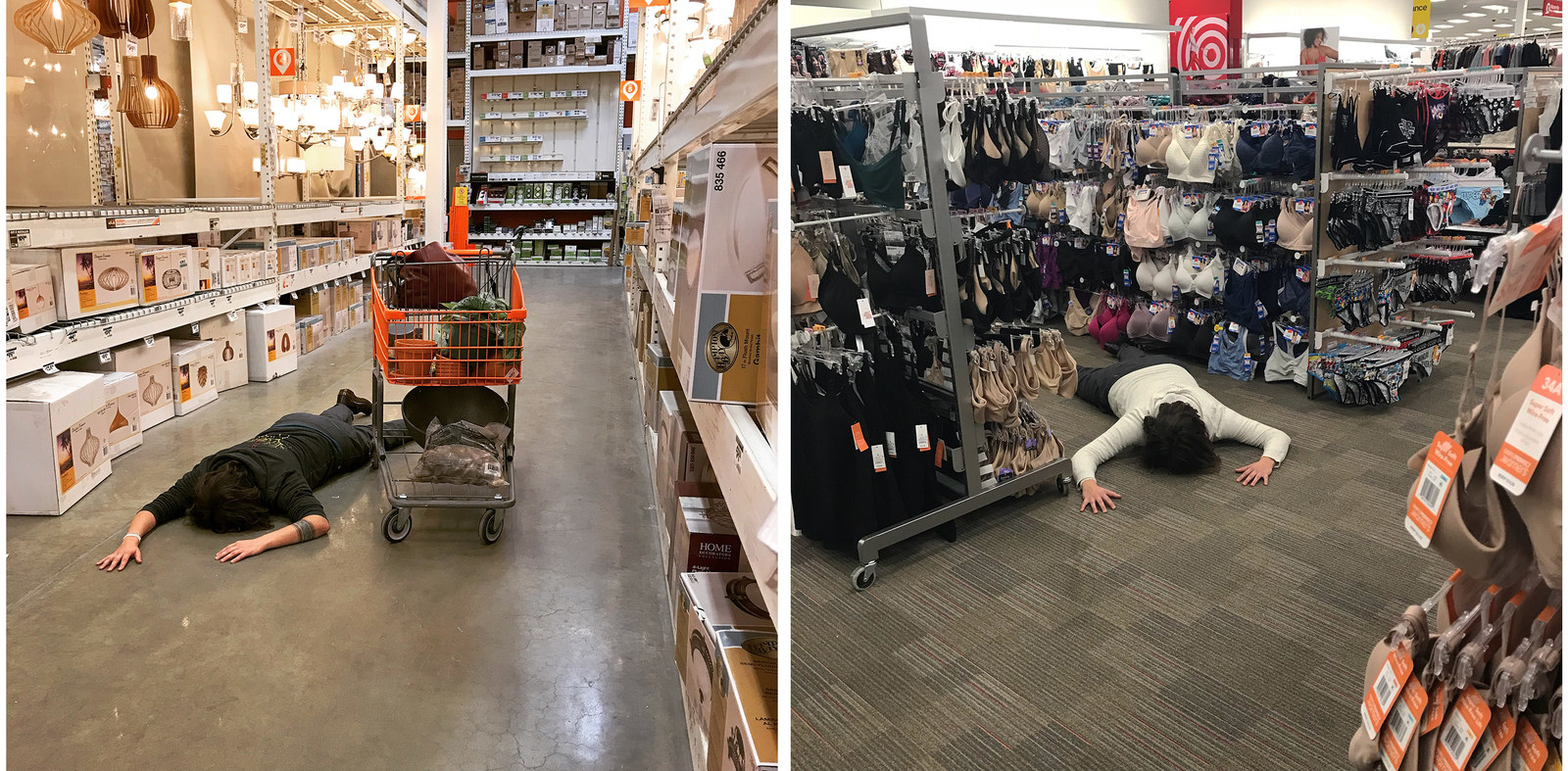
So I asked myself: What if I were open to expressing my sadness, anxiety, even “craziness,” in a public place? What if I just “fell out,” regardless of who was around?
These pictures are at times banal and unremarkable, but I’m OK with that. They are not meant to be precious. The intention of this series is to compile an archive of shameless vulnerability and to offer it to anyone who has lived with or alongside emotional struggle.
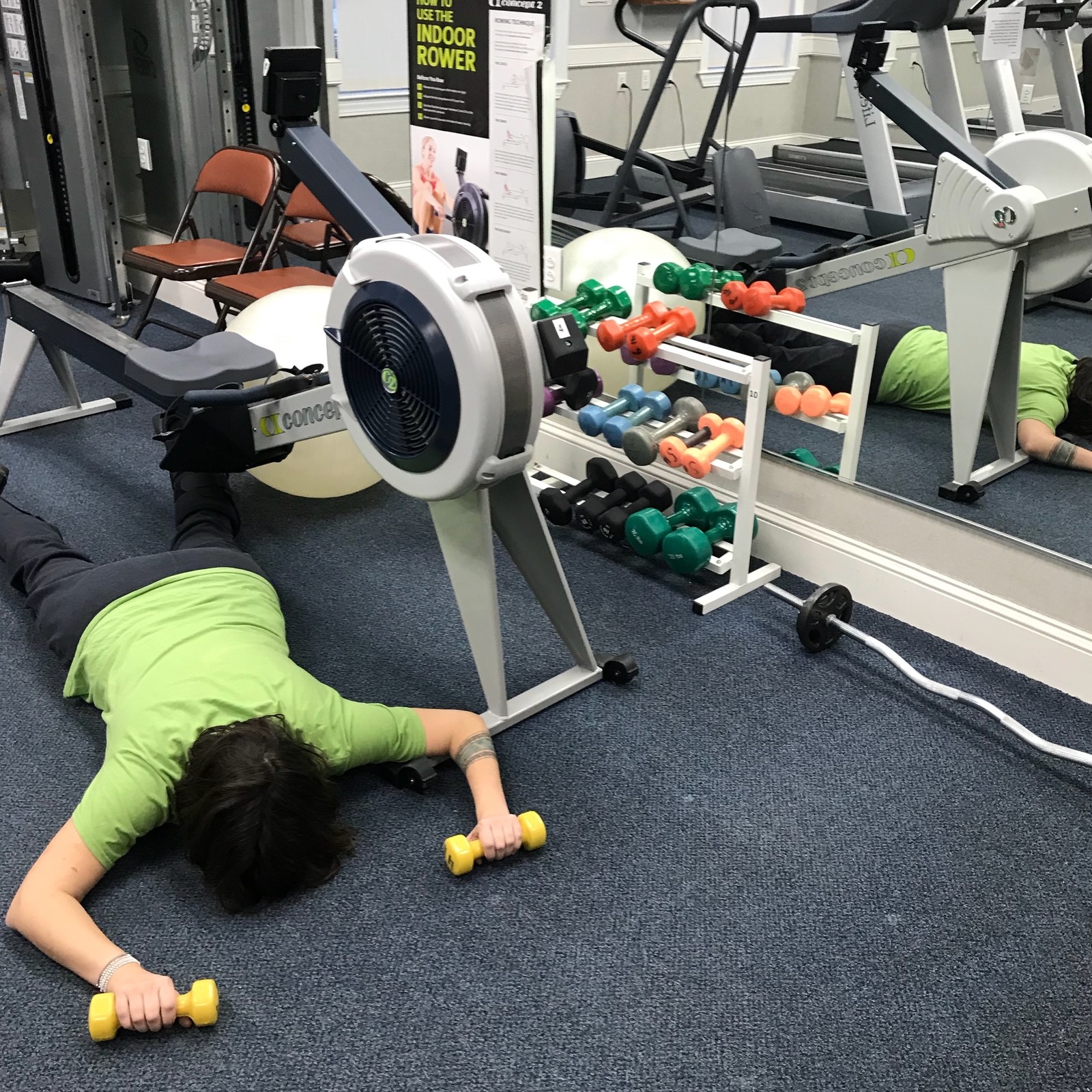
I have a long and complicated relationship with emotional stability, and though I was given a diagnosis that fits many of my symptoms, I don’t often use it when referring to myself. I just don’t think it gets to the marrow of who I am, and in general I don’t think that labels are imaginative enough for my experiences of “mental illness.”
That said, it’s very obvious to me that I navigate the world in an atypical way, and this past fall was particularly difficult. My life and functioning came to a stop for a couple of months, and it took me a long time to fully recover.
This project has really helped me to make something of that particular episode.
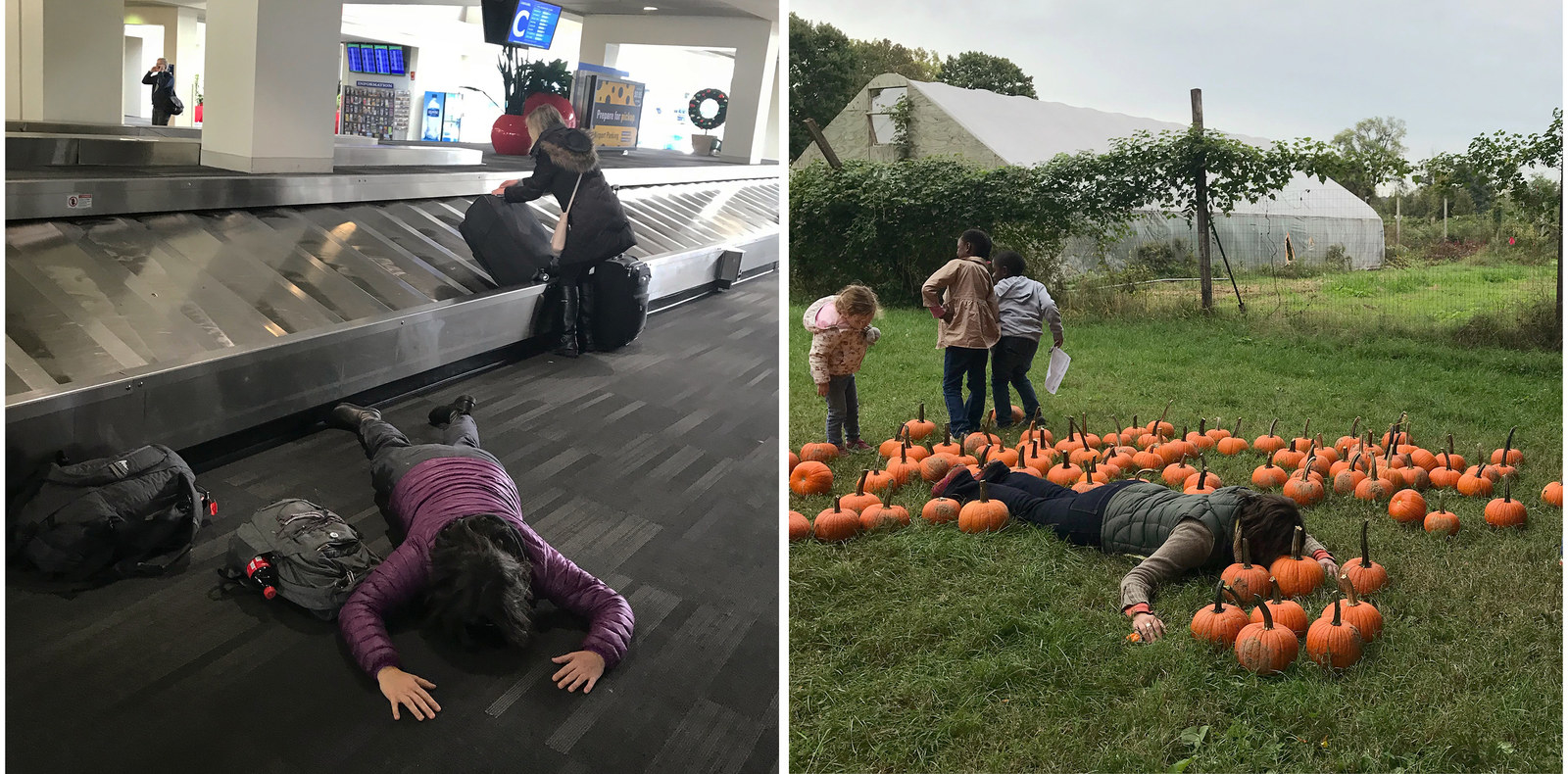
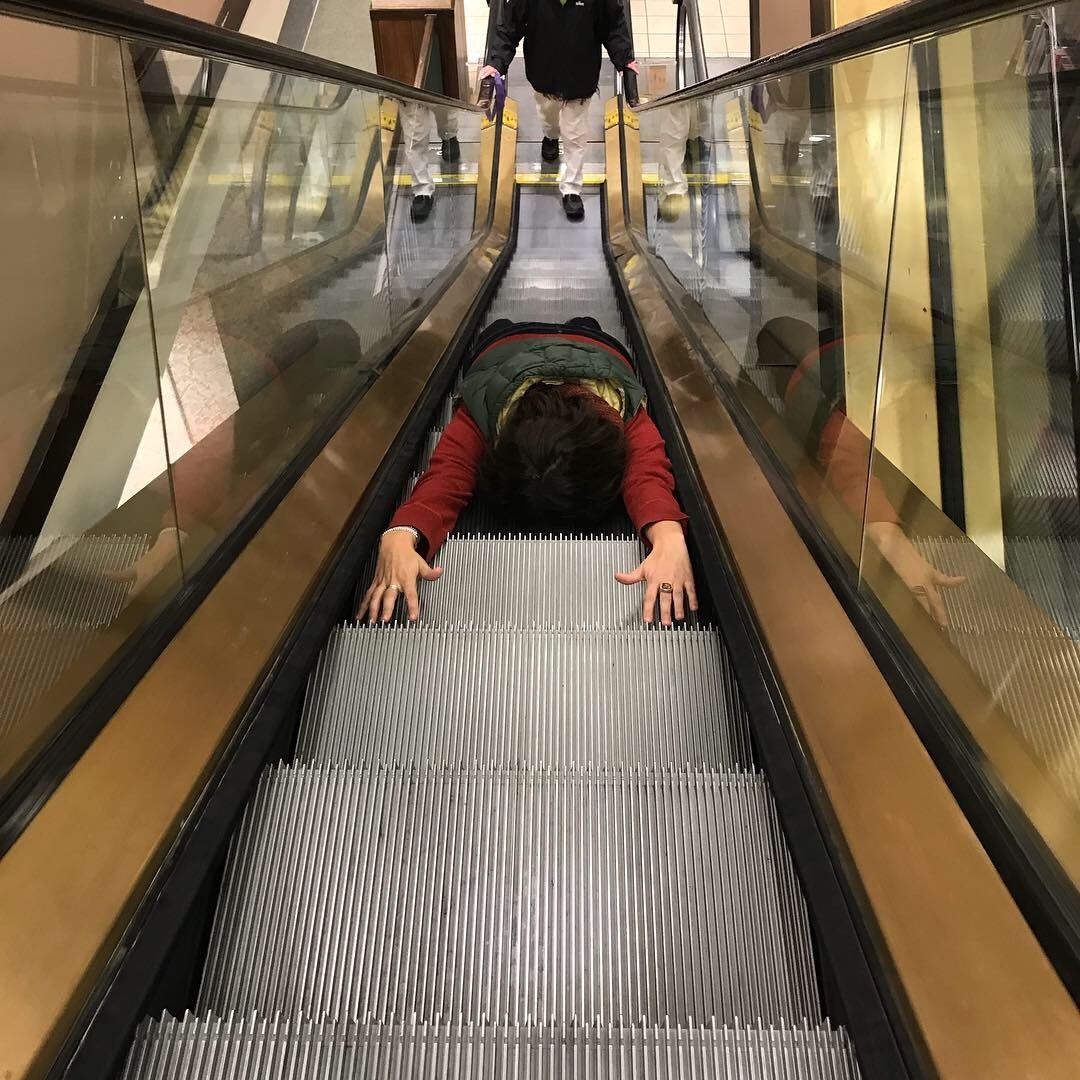
Making these photographs has been good for me on a number of levels. When I’m thinking about or visualizing an idea for an image, it leaves no room for useless rumination, which I’m prone to. Being creative has always helped coax me out of myself and into the world again, and that is especially true with these portraits.
This project is encouraging me to interact with public spaces and the people within them. It’s acting as an antidote to my isolation.
And though working on this project has helped me to focus and to feel connected to the world again, not all days are easy. Recently, I found myself completely overwhelmed with demands, and I felt like I couldn’t possibly make a picture. I realize how ironic that sounds, but there are times when it’s hard to push through the experience of devastation in order to express that devastation in images.
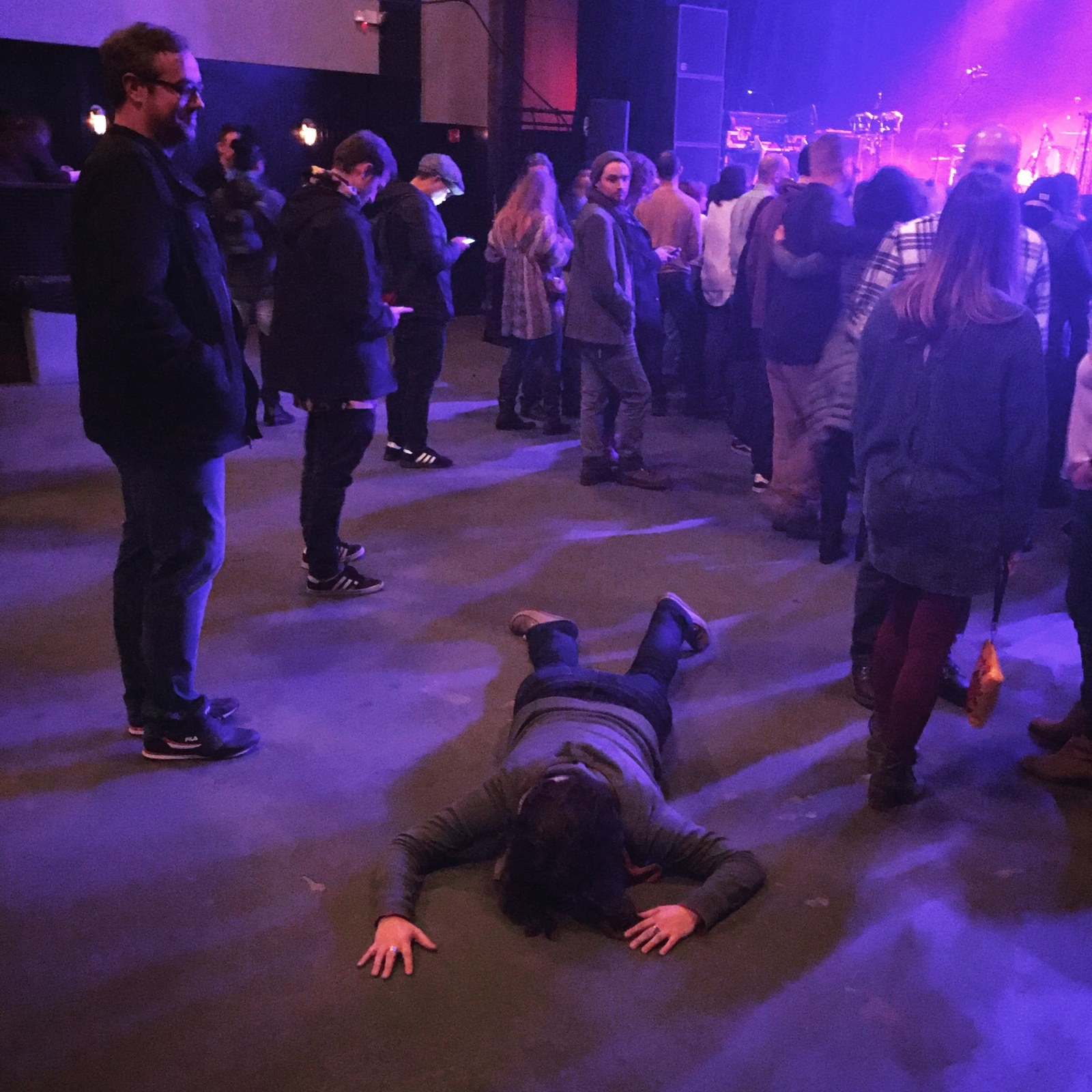
I have always been a very private person, so making this series has also been a bit of a risk for me. But now that it is out in the world, now that I see how others are connecting with it, I feel good.
The first time someone messaged to tell me that I really “got” them, I was both surprised and relieved. I don’t have any words of wisdom for anyone; we each navigate our struggles differently, but I like the idea that we are connecting over images, ideas, compassion, and humor. I like that “getting” each other can be both universal and anonymous.
I was honestly surprised when I started receiving comments and direct messages from strangers who had come across the images. Some find the poses very disturbing, and then others find them absurd and amusing. I love that there’s room for such extremes of interpretation. It has been very motivating to know that there are people relating to the work, and fascinating to hear how they are relating to it.
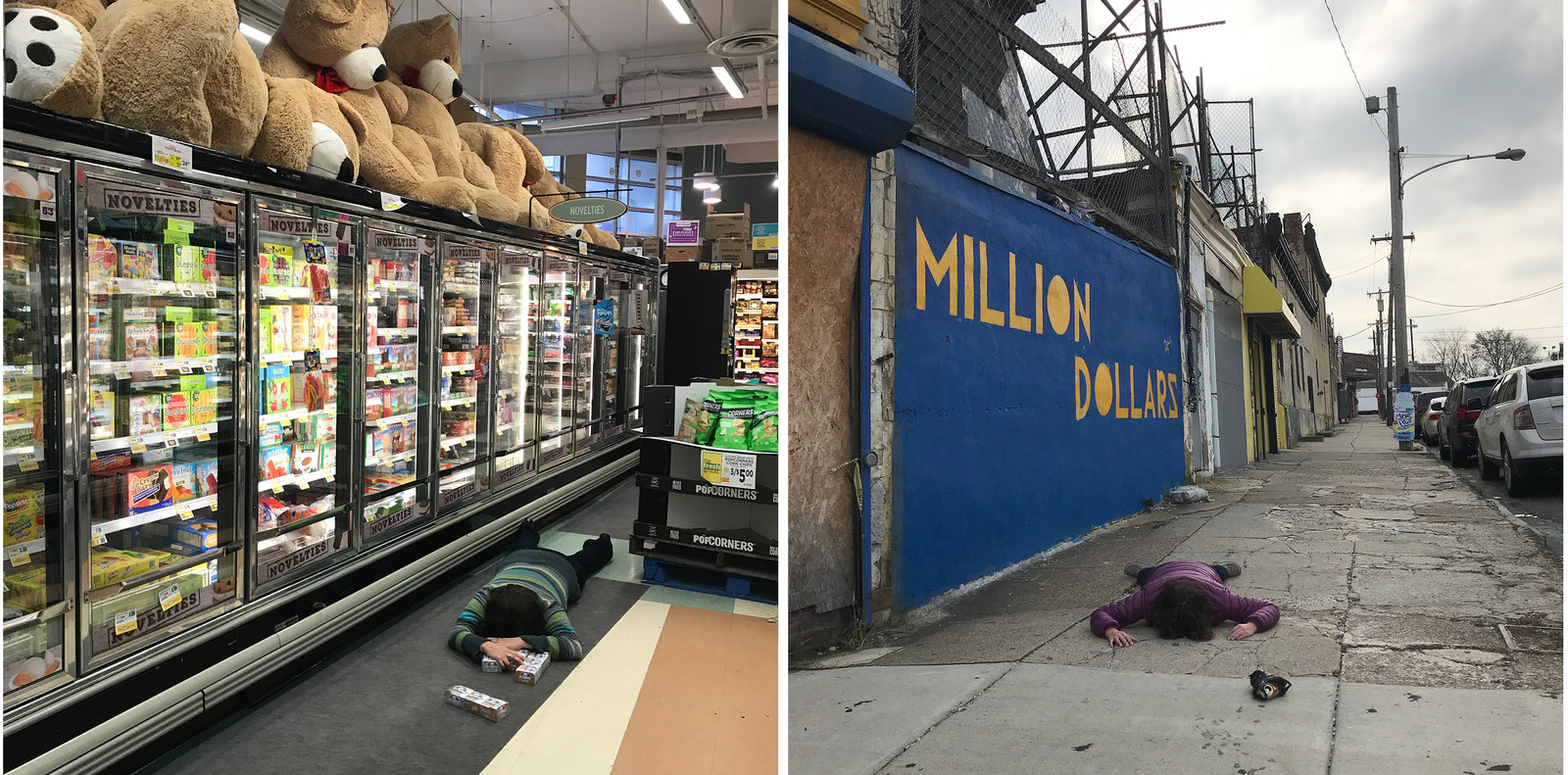
I hope that people come away from this series with a layered experience of the work. This project is fun for me largely for the relationships that are happening within and between photographs. I like that. I want these images to be open to interpretation, to be as equally capable of humor as they are of compassion.

